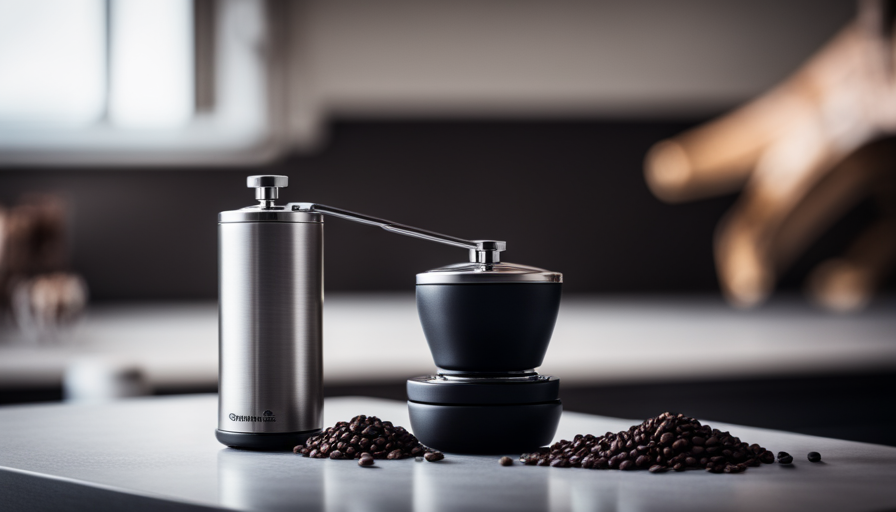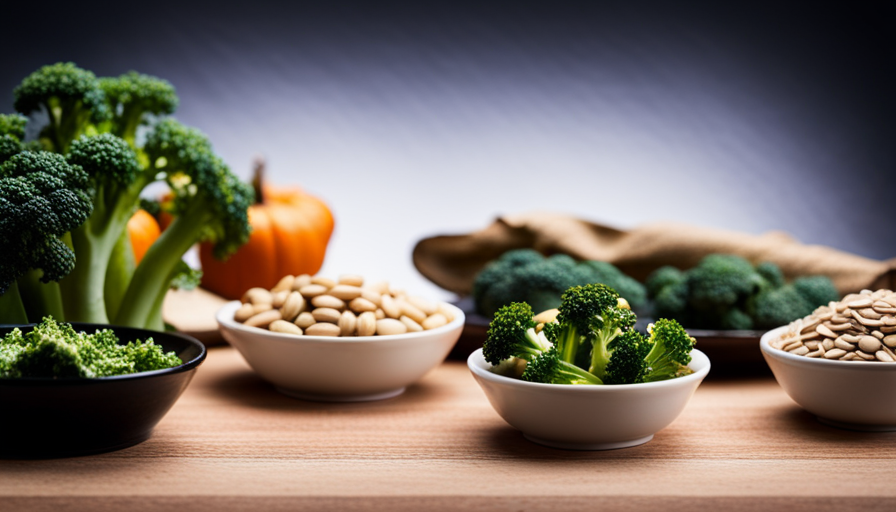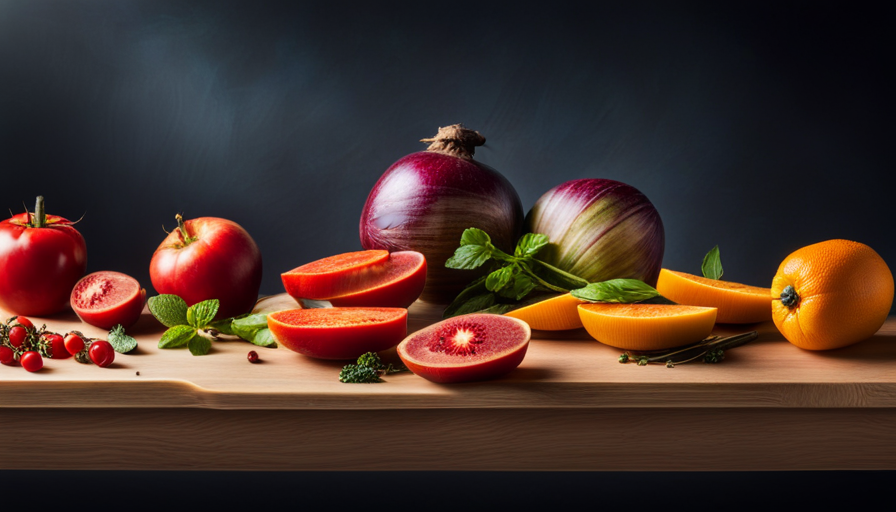For those who love coffee, finding the ideal grinder is akin to stumbling upon the Holy Grail for coffee enthusiasts.
Enter the Timemore C3: an affordable and portable hand coffee grinder that promises to revolutionize your brewing experience. With its updated 38 mm conical steel burr set and new spike to cut technology, this grinder guarantees a fast and light grinding process, ideal for both drip brewing and espresso.
The Timemore C3 has garnered praise for its exceptional grind consistency and sturdy build quality. Made of aluminum with a unique engraved surface for enhanced grip, this compact and lightweight grinder is a joy to handle.
While it may be slightly slower than its predecessor, the C2, its affordability in comparison to other premium hand grinders is an undeniable advantage.
If you’re in search of a reliable and pocket-friendly coffee grinder, the Timemore C3 should be at the top of your list.
Key Takeaways
- Timemore C3 is a fast, light, and portable hand coffee grinder that is suitable for drip brewing and espresso.
- It has a grind consistency rated 4/5 and a build quality rated 4.5/5, making it a reliable option.
- While the C3 has a stepped adjustment that may make it difficult to optimize for espresso, it is still considered an affordable option compared to other premium hand grinders.
- The Timemore C3 is primarily designed for pour over brews, but it can also be used for espresso. However, if budget is a concern, the Hario Skerton Pro is a cheaper alternative.
Features and Specifications
The Timemore C3 is an affordable and portable hand coffee grinder that features a 38 mm conical steel burr set with new spike to cut technology, making it suitable for drip brewing and espresso.
With a grind consistency rating of 4/5, it delivers a consistent grind size for optimal flavor extraction.
The grinder is designed primarily for pour over brews, but it can also be used for espresso.
Its portable design, with a height of 5.8 inches and weight of 423 g, makes it easy to take on the go.
The C3 is made of aluminum with a unique engraved surface for grip, and it has a stainless steel handle mounted on ball bearings for smooth and efficient grinding.
While it may not have the same burr quality as other premium hand grinders, the Timemore C3 offers great value for money and is highly recommended for coffee enthusiasts looking for an affordable and portable option.
Pros and Cons
Pros and cons of the Timemore C3 can be evaluated by considering its fast and lightweight design, upgraded burr set, suitable brewing capabilities, and positive reviews for consistency and value, balanced against its stepped adjustment for espresso optimization and slower speed compared to previous models.
| Pros | Cons |
|---|---|
| Fast grinding | Stepped adjustment for espresso |
| Lightweight and portable | Slower than previous models |
| Upgraded burr set | Primarily designed for pour over brews |
| Suitable for drip brewing and espresso | Not recommended for tight budgets |
| Positive reviews for consistency and value | No significant improvement in flavor or user experience compared to previous model |
The Timemore C3 hand coffee grinder offers several advantages. Its fast grinding speed allows for quick and efficient coffee preparation. The lightweight and portable design make it easy to take on the go. The upgraded burr set, featuring new spike to cut technology, ensures a consistent grind size for both drip brewing and espresso. Positive reviews praise its consistency and value for money.
However, there are some drawbacks to consider. The stepped adjustment system makes it difficult to optimize for espresso brewing. The grinder is slower compared to previous models, which may not be ideal for those who value speed. Additionally, while it is suitable for drip brewing and espresso, it is primarily designed for pour over brews. It is also not recommended for tight budgets, as there are more affordable alternatives available. Lastly, there is no significant improvement in flavor or user experience compared to the previous C2 model.
Overall, the Timemore C3 hand coffee grinder offers a range of features and capabilities, but it may not be the best option for those specifically looking for an espresso-focused grinder or on a tight budget.
Comparison with other models
When comparing the Timemore C3 to other models, its stepped adjustment system and slower speed should be taken into consideration.
Here is a comparison of the Timemore C3 with the Hario Skerton Pro and the J Max and Kinu M47:
-
Timemore C3 vs Hario Skerton Pro:nnThe Timemore C3 offers a more consistent grind compared to the Hario Skerton Pro. It also has a better build quality and a more efficient grinding process.
-
Timemore C3 vs J Max:nnThe J Max is known for its exceptional grind quality and versatility. However, the Timemore C3 offers similar grind consistency at a more affordable price point.
-
Timemore C3 vs Kinu M47:nnThe Kinu M47 is often considered one of the best hand grinders on the market. While it may offer slightly better grind quality, the Timemore C3 provides excellent value for money and is a more budget-friendly option.
Overall, the Timemore C3 holds its own against these other models, offering a reliable and affordable option for coffee enthusiasts.
Frequently Asked Questions
How does the Timemore C3 compare to electric coffee grinders in terms of grind quality?
The Timemore C3 offers a grind quality that can rival some electric coffee grinders. Its updated 38 mm conical steel burr set with new spike to cut technology ensures a consistent grind size, rated at 4/5.
While electric grinders may offer more convenience and speed, the Timemore C3’s portability and lightweight design make it a great option for traveling and camping. Its compact size and durable build quality make it a reliable choice for coffee enthusiasts on the go.
Can the Timemore C3 be used for grinding spices or other ingredients besides coffee beans?
The Timemore C3, while primarily designed for grinding coffee beans, can also be used for grinding spices and other ingredients. However, there are both pros and cons to using the Timemore C3 for this purpose.
Pros include its affordability, portability, and consistent grind quality. The Timemore C3’s 38 mm conical steel burrs and unique spike to cut technology ensure a reliable and uniform grind. Additionally, its compact size and lightweight design make it easy to transport and use on the go.
However, there are also some drawbacks to consider. The stepped adjustment on the Timemore C3 makes it difficult to optimize for grinding spices, as it is primarily designed for coffee. Furthermore, the slower grind speed compared to previous models may not be ideal for grinding larger quantities of spices.
While the Timemore C3 can be used for grinding spices and other ingredients, it is important to consider the pros and cons. Its affordability and consistent grind quality make it a viable option, but the limitations of its stepped adjustment and slower grind speed should be taken into account.
Is the Timemore C3 suitable for traveling and camping?
Using a hand coffee grinder like the Timemore C3 while traveling or camping offers several advantages. Firstly, it is portable and lightweight, making it easy to carry and use in different locations.
Secondly, it does not require electricity, allowing for use in remote areas without power sources.
To maintain and clean the Timemore C3 while on the go, it is recommended to disassemble it and rinse the parts with water. It is also important to dry the grinder thoroughly to prevent rusting.
How long does it take to grind a full 25g capacity of coffee beans with the Timemore C3?
The Timemore C3 hand coffee grinder offers a grind speed that is commendable for its price range. While there is no specific data available on the exact time it takes to grind a full 25g capacity of coffee beans with the Timemore C3, user reviews suggest that it is relatively quick and efficient.
In terms of durability, the Timemore C3 is constructed with high-quality materials and boasts a standout build quality, ensuring that it can withstand regular use and potential travel or camping adventures.
Are replacement parts available for the Timemore C3, and how easy are they to find?
Replacement parts for the Timemore C3 hand coffee grinder are available, although their ease of finding may vary. As an affordable and popular option on the market, Timemore has made efforts to ensure that replacement parts are accessible to customers. However, it is important to note that availability may depend on the specific location and distributor. Potential buyers should consider this factor when evaluating the overall value and long-term usability of the Timemore C3.
Is the Timemore C3 Hand Coffee Grinder a Good Match for Affordable Coffee Makers?
When it comes to affordable coffee makers, the Timemore C3 Hand Coffee Grinder is a perfect match. With its precise grind settings and durable construction, it can deliver consistent and high-quality grounds to maximize the potential of your budget-friendly coffee maker.
Conclusion
In conclusion, the Timemore C3 hand coffee grinder proves to be a commendable choice for coffee enthusiasts on a budget. Its affordable price tag, combined with its portability and sturdy build quality, make it a reliable companion for the on-the-go coffee lover.
While the burr quality may not be top-notch, the C3 still delivers a consistent grind that is suitable for both drip brewing and espresso.
With its compact size and lightweight design, this grinder is certainly a contender in the world of manual coffee grinders.
So, if you’re seeking a wallet-friendly option that doesn’t compromise on performance, the Timemore C3 is worth considering.










